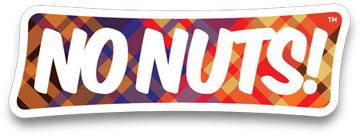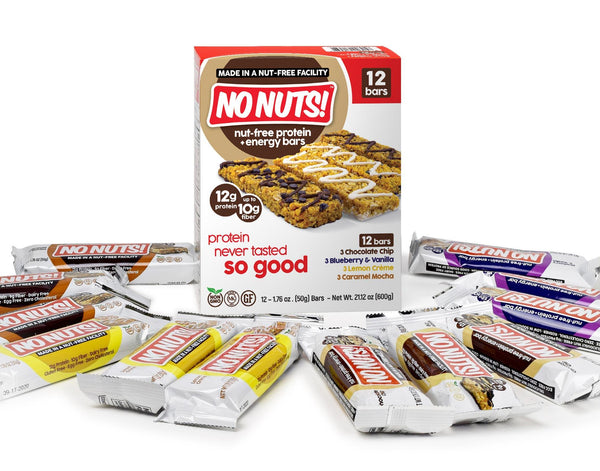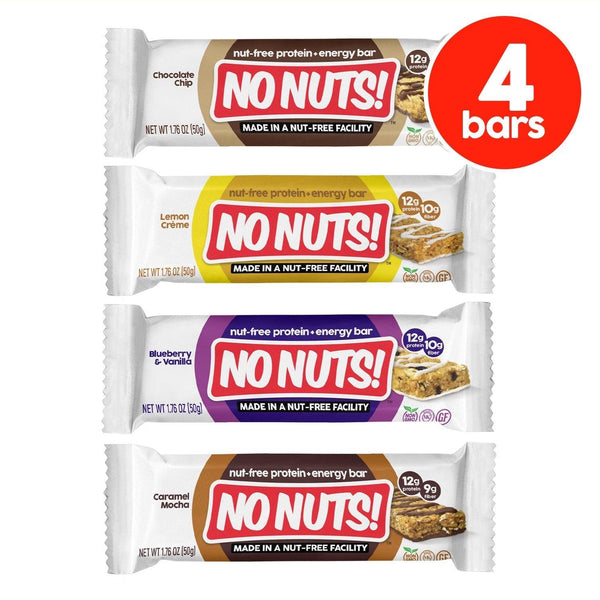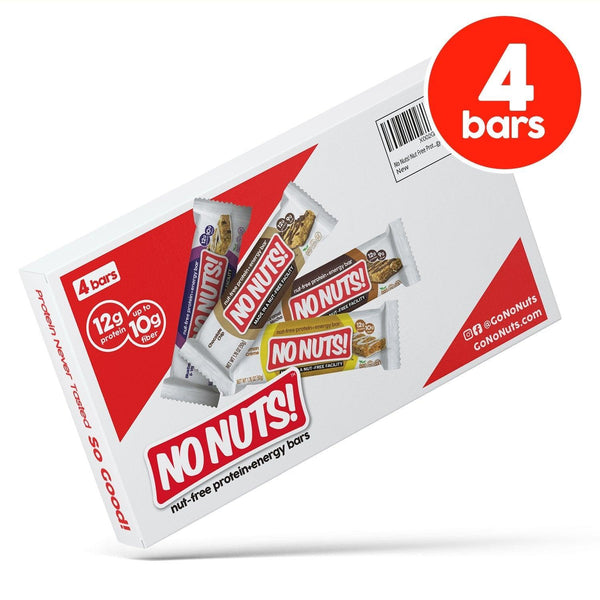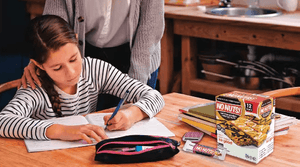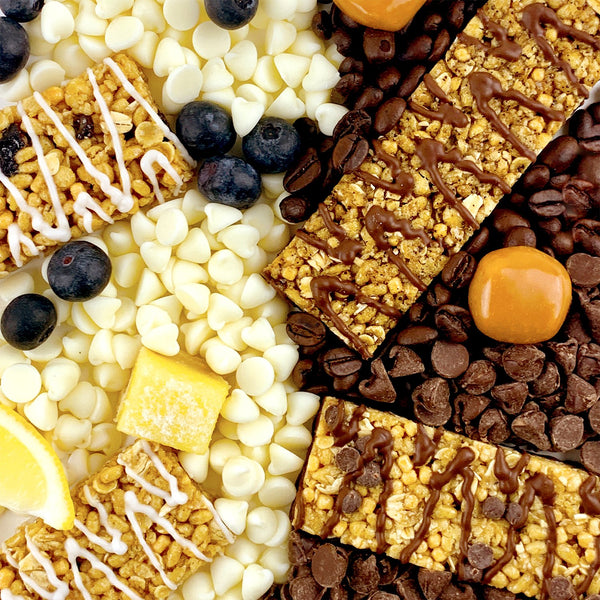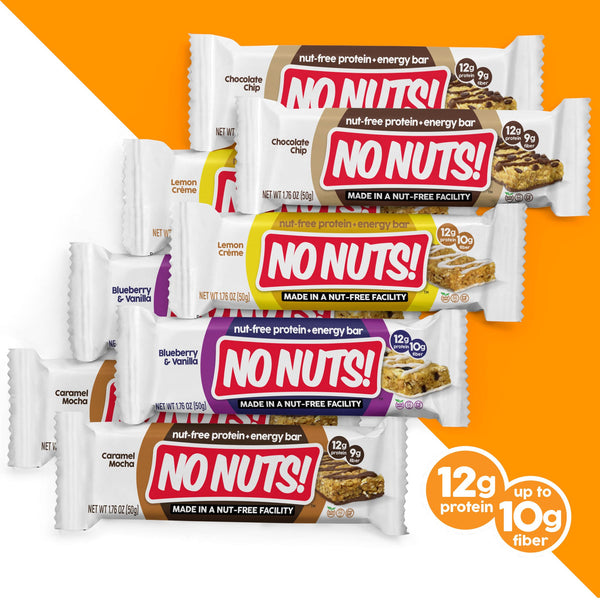Creando una cocina segura: Consejos esenciales para cocinar sin gluten ni frutos secos
Nov 14, 2024
¡Bienvenidos a una cocina segura y deliciosa! Si tú o tus seres queridos tienen alergia al gluten o a los frutos secos, crear una cocina segura es fundamental. Controlar las alergias alimentarias puede parecer complicado al principio, pero con los conocimientos y las herramientas adecuadas, puedes convertir tu cocina en un espacio feliz y libre de alergias. Tenemos consejos fáciles de seguir para ayudarte a crear un ambiente de cocina seguro y divertido para todos. ¡Averigüemos cómo hacer que tu cocina sea apta para alérgicos!
Conclusiones clave
- Limpie bien con agua tibia y jabón.
- Organice los alimentos para separar los alérgenos.
- Utilice herramientas separadas para cocinar sin alérgenos
- Lea atentamente las etiquetas al comprar
- Tenga siempre un plan de acción de emergencia
Entendiendo las alergias alimentarias
Las alergias alimentarias se producen cuando el sistema inmunitario confunde ciertas proteínas alimentarias con dañinas. Esto provoca que el cuerpo libere sustancias químicas como la histamina, lo que puede provocar molestias leves o reacciones graves. Las alergias al gluten y a los frutos secos son comunes y difíciles de controlar, ya que estos ingredientes se encuentran en muchos alimentos. Incluso pequeñas cantidades de alérgenos pueden causar reacciones en algunas personas, por lo que una cocina segura es fundamental.
Cómo configurar su cocina segura
Crear una cocina segura es como construir una fortaleza contra los alérgenos, pero también se trata de crear un espacio donde todos puedan disfrutar de la comida sin preocupaciones. Aquí tienes algunas maneras, aprobadas por expertos, de hacer que tu cocina sea súper segura y apta para alérgenos:
1. Limpia como un profesional
La limpieza es tu arma secreta contra los alérgenos. Usa agua tibia y jabón para lavar todo a fondo. Presta especial atención a las zonas donde podrían quedar restos de comida. Limpia las encimeras, las tablas de cortar e incluso las manijas del refrigerador. Para mayor seguridad, usa paños de limpieza desechables para evitar la contaminación cruzada. ¡Es como darle a tu cocina un baño de superhéroes que elimina los alérgenos! Algunos alérgenos pueden ser difíciles de eliminar, así que limpia a fondo y con frecuencia para mantener la seguridad.
2. Organiza tu comida
Mantén tus alimentos seguros lejos de los que contienen alérgenos. Usa recipientes especiales o reserva estantes específicos para alimentos sin alérgenos. ¡Es como darles a tus alimentos seguros una sección especial! Puedes usar recipientes o etiquetas con códigos de colores para identificar fácilmente los alimentos seguros. Esto ayuda a prevenir accidentes y hace que cocinar sea más fácil y menos estresante para todos en casa.
3. Utilice herramientas especiales
Tener herramientas separadas para alimentos seguros es fundamental para prevenir la contaminación cruzada. Puedes usar tablas de cortar, utensilios o incluso electrodomésticos de diferentes colores para alimentos sin alérgenos. Por ejemplo, usa una tabla de cortar roja para alimentos sin gluten y una verde para alimentos sin frutos secos. ¡Es como darles a tus alimentos seguros sus propios utensilios especiales! Este sistema de colores ayuda a todos en la cocina a identificar rápidamente qué herramientas son seguras, lo que reduce la probabilidad de accidentes.
Cocinar sin gluten ni frutos secos
Preparar comida deliciosa sin gluten ni frutos secos es más fácil de lo que crees. ¡Es una oportunidad para probar nuevos sabores e ingredientes!
1. Encuentra nuevos ingredientes
Hay muchos ingredientes deliciosos que puedes usar en lugar de gluten o frutos secos. Para hornear, prueba harina de arroz, harina de almendras o harina de coco en lugar de harina de trigo. La mantequilla de semillas de girasol o de calabaza puede sustituir a la mantequilla de cacahuete. Explora alimentos como la quinoa, el trigo sarraceno o el mijo como opciones de cereales sin gluten. ¡Es como buscar ingredientes nuevos y seguros que hagan que cocinar sea emocionante!
2. Lea las etiquetas con atención
Revisa siempre las etiquetas de los alimentos al comprar. Esta es tu primera defensa contra los alérgenos ocultos. Busca indicaciones claras como "sin gluten" o "sin frutos secos", pero no te quedes ahí. Aprende otros nombres para alérgenos comunes y presta atención a las advertencias sobre contaminación cruzada. ¡Es como ser un detective de alimentos! Recuerda revisar las etiquetas con regularidad, incluso en el caso de alimentos que ya hayas comprado, ya que las recetas pueden cambiar. Esta revisión minuciosa te ayudará a elegir las opciones más seguras para tu cocina, preparada para personas alérgicas.
3. Prueba nuevas recetas
Hay muchísimas recetas geniales sin gluten ni frutos secos. Puedes preparar pizzas deliciosas con masa sin gluten usando harina de coliflor o garbanzo, o galletas con ingredientes seguros como avena y mantequillas de semillas. Prueba platos de todo el mundo que naturalmente no contienen gluten ni frutos secos, como los rollos de papel de arroz vietnamitas o las tortillas de maíz mexicanas. ¡Es como ser chef en tu propio restaurante sin alérgenos! No tengas miedo de cambiar recetas antiguas sustituyendo los alérgenos por opciones seguras: ¡podrías crear nuevos favoritos para la familia!
Seguridad a la hora de la merienda
A todos nos encantan los snacks, ¡y tener alergias no significa que no puedas disfrutarlos! Los snacks sin frutos secos son una excelente manera de comer de forma segura y saciar tus antojos. Veamos algunas opciones deliciosas y saludables:
Estas deliciosas barritas no contienen frutos secos ni gluten, lo que las convierte en snacks seguros para personas con alergias. Vienen en divertidos sabores como chispas de chocolate, vainilla con arándanos, moca con caramelo y crema de limón, así que hay para todos los gustos. No solo son seguros, sino que también están repletos de nutrientes como proteínas, fibra y grasas saludables para mantenerte con energía todo el día. ¡Es como una fiesta en la boca, pero segura y que se adapta a tu dieta!
Comer fuera y fiestas
Salir a comer o ir a fiestas puede ser complicado si tienes alergias, pero con la estrategia adecuada, puedes divertirte y mantenerte seguro. Aquí tienes algunos consejos:
1. Habla claro
Siempre informa a tus amigos, anfitriones de fiestas o personal del restaurante sobre tus alergias. Es importante y está bien hacer preguntas sobre la comida. Sé claro sobre a qué eres alérgico y no dudes en preguntar qué contiene la comida, cómo está hecha y si existe la posibilidad de que haya estado en contacto con otros alimentos con alérgenos. Muchos restaurantes ahora tienen menús especiales para personas con alergias o pueden darte más información sobre sus platos. Considéralo como tu propio superhéroe de la salud: ¡vale la pena hablar por tu seguridad!
2. Trae tus propios bocadillos
Es buena idea llevar bocadillos seguros cuando vayas a eventos o comas fuera. Así, siempre tendrás algo para comer, incluso si no hay muchas opciones seguras. Lleva cosas como fruta, palitos de verduras, barritas energéticas o dulces caseros. Es como tener un escondite secreto de comida deliciosa que te mantiene seguro y te permite disfrutar de la diversión. Además, si llevas más, ¡quizás incluso les regales a tus amigos bocadillos deliciosos para alérgicos que no hayan probado antes!
Enseñar a otros sobre las alergias
Ayudar a tus amigos, familiares y comunidad a comprender las alergias alimentarias es fundamental para crear un ambiente más seguro para todos. Cuanto más sepan las personas sobre las alergias, mejor podrán ayudar a quienes las padecen. Aquí tienes algunas maneras divertidas de difundir el mensaje:
1. Organice una exposición sobre alergias
Organiza una sesión divertida e informativa donde muestres tus alimentos seguros y expliques por qué son especiales. Puedes enseñar a leer las etiquetas de los alimentos, identificar posibles alérgenos y preparar refrigerios sencillos para alérgenos. Incluso podrías crear un cuestionario o juego divertido para poner a prueba tus conocimientos sobre alérgenos comunes y alternativas seguras. ¡Es como dar una presentación científica divertida que podría ayudar a mantener a las personas seguras!
2. Haz un cartel de seguridad
Crea un póster colorido e informativo sobre alergias alimentarias para tu habitación, cocina o incluso tu escuela o lugar de trabajo. Incluye información importante sobre alérgenos comunes, signos de reacciones alérgicas y qué hacer en caso de emergencia. Usa colores brillantes, imágenes claras y texto fácil de leer para que todos lo entiendan. También puedes agregar una sección sobre sustitutos populares para alérgenos de ingredientes comunes. ¡Es como crear tu propia valla publicitaria de superhéroes que enseña y protege!
Esté preparado para las emergencias
Incluso con mucho cuidado, pueden ocurrir accidentes. Estar preparado para posibles emergencias es fundamental cuando se trata de alergias alimentarias. Aquí te explicamos cómo puedes asegurarte de estar preparado para cualquier situación:
1. Tenga un plan de acción
Colabore con su médico para crear un plan de acción de emergencia detallado. Este plan debe detallar paso a paso qué hacer si tiene una reacción alérgica, incluyendo cuándo y cómo usar medicamentos de emergencia. Guarde copias de este plan en casa, el trabajo, la escuela y compártalo con sus familiares, amigos y cuidadores. Es como tener un plan de acción especial, ¡pero para mantenerse sano!
2. Llevar medicamentos
Si su médico le ha recetado un medicamento de emergencia para las alergias, como un autoinyector de epinefrina, llévelo siempre consigo. Asegúrese de que sea fácil de alcanzar y que no esté caducado. Aprenda a usar el medicamento correctamente y enséñele a quienes le rodean. Le recomendamos usar una pulsera o collar de alerta médica que indique sus alergias e indique que tiene un medicamento de emergencia. Es como llevar un escudo que lo protege y le da la confianza para afrontar su día con seguridad.
Conclusión: Tu aventura en la cocina segura
Crear una cocina segura para cocinar sin gluten ni frutos secos es una aventura emocionante. Se trata de mucho más que simplemente evitar ciertos alimentos; se trata de encontrar nuevas maneras de cocinar y comer que abran un mundo de deliciosas posibilidades. Recuerda: se trata de ser cuidadoso, creativo y disfrutar de alimentos seguros. Con estos consejos y los deliciosos snacks No Nuts!, estás listo para una experiencia deliciosa y sin alergias, llena de sabor y buena nutrición.
Recuerda, cuidar tus alergias alimentarias puede ser divertido y delicioso. ¡Sigue probando nuevas recetas, descubre los diferentes productos No Nuts! y disfruta de tus aventuras culinarias sin alergias! Si mantienes una actitud positiva y ves tus necesidades alimentarias como una oportunidad para ser creativo en la cocina, descubrirás muchos sabores y texturas nuevos que todos podrán disfrutar, sin importar si tienes alergias.
Para más información sobre nuestros productos o opciones de venta al por mayor , visite nuestro sitio web. Ofrecemos opciones deliciosas y seguras para personas con alergias alimentarias y sus familias. Y si desea conocer más sobre nuestra historia y misión, consulte nuestro kit de prensa . ¡Que disfrute cocinando, cuídese y recuerde: un mundo de deliciosos alimentos aptos para alérgicos le espera en su cocina recién transformada!
